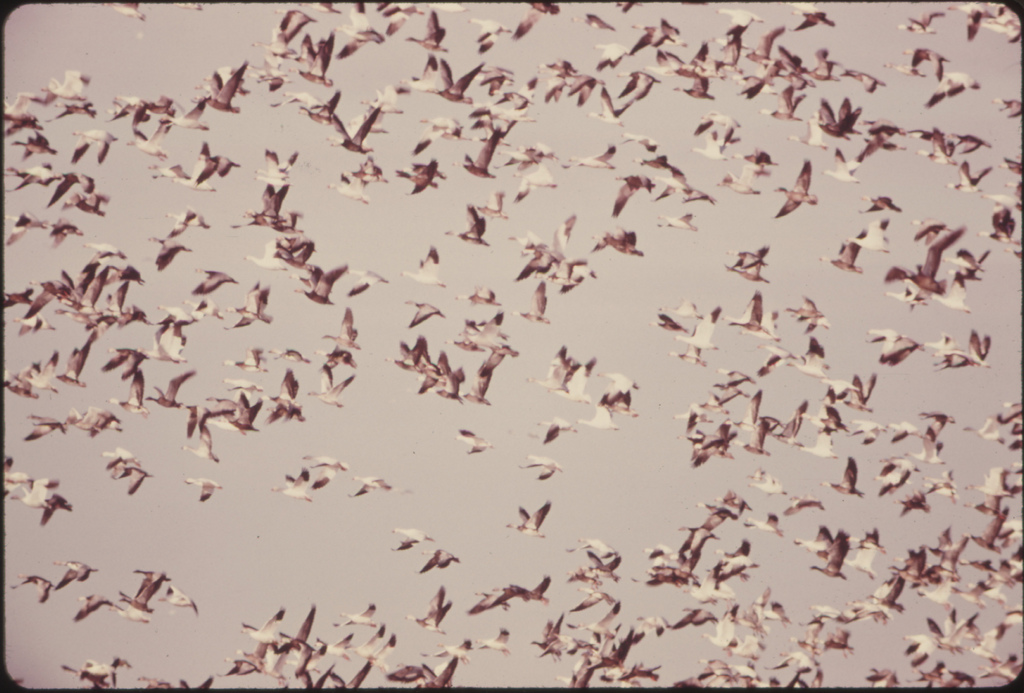Fall migrations
This post contributed by Nadine Lymn, ESA Director of Public Affairs
Now that mid-October has arrived, many of us notice the shortening days, dark mornings, and new chill in the air. Thoughts turn to cozy indoor activities, hot beverages, and away from such outdoor hobbies such as gardening. But while we have the luxury of moving many of our activities indoors during the upcoming winter chill, other species in North America—primarily birds and butterflies—are either preparing for long travel or are already en route to southerly destinations.
As noted in a wild bird blog for nature enthusiasts, some 350 species of birds in North America migrate, the majority of them to wintering destinations that include Mexico, Central and South America, and the West Indies: “In North America there are four major migration routes, known as the Atlantic, Mississippi, Central and Pacific Flyways. A flyway can generally be described as a broad geographical area of travel consisting of hundreds of widely diverse, individual migration routes. No two species of birds will travel exactly the same route from beginning to end.”
The U.S. Geological Survey provides an in-depth description of the migration routes birds take as they leave the U.S. on their way to various wintering grounds. Some species, such as many shorebirds, begin their fall migration as early as July, while others, like goshawks, redpolls and waxwings may not get started until winter. As many birders know, most birds migrate during the night. According to the USGS website, the most likely hypothesis for this is that this maximizes birds’ ability to refuel and rest. Birds traveling all night can come to rest at daybreak and begin to find food; if they flew all day and came to rest at night, they would be unlikely to garner food, which they urgently need after long exertion. There are, however, some daytime migrants, among them loons, cranes, and pelicans as well as soaring birds which depend upon thermals for their flight.
This website lets you find out what birds may be passing through your area now and in the coming months.
Birds are not the only ones taking flight in the fall. Butterflies are also on the move, with the Monarch butterfly probably the most well-known of these. And even though many of us lose interest in gardening when summer ends, the National Wildlife Federation (NWF) points out the value of gardens that offer late blooming plants such as asters and goldenrods for fall migrants, including hummingbirds and various species of butterflies, such as the monarch, painted lady, and cloudless sulfur.
Cape May, New Jersey, is a key resting spot for migrating monarchs, as the video below describes.
Photo credit: U.S. National Archives, Patricia Duncan.
